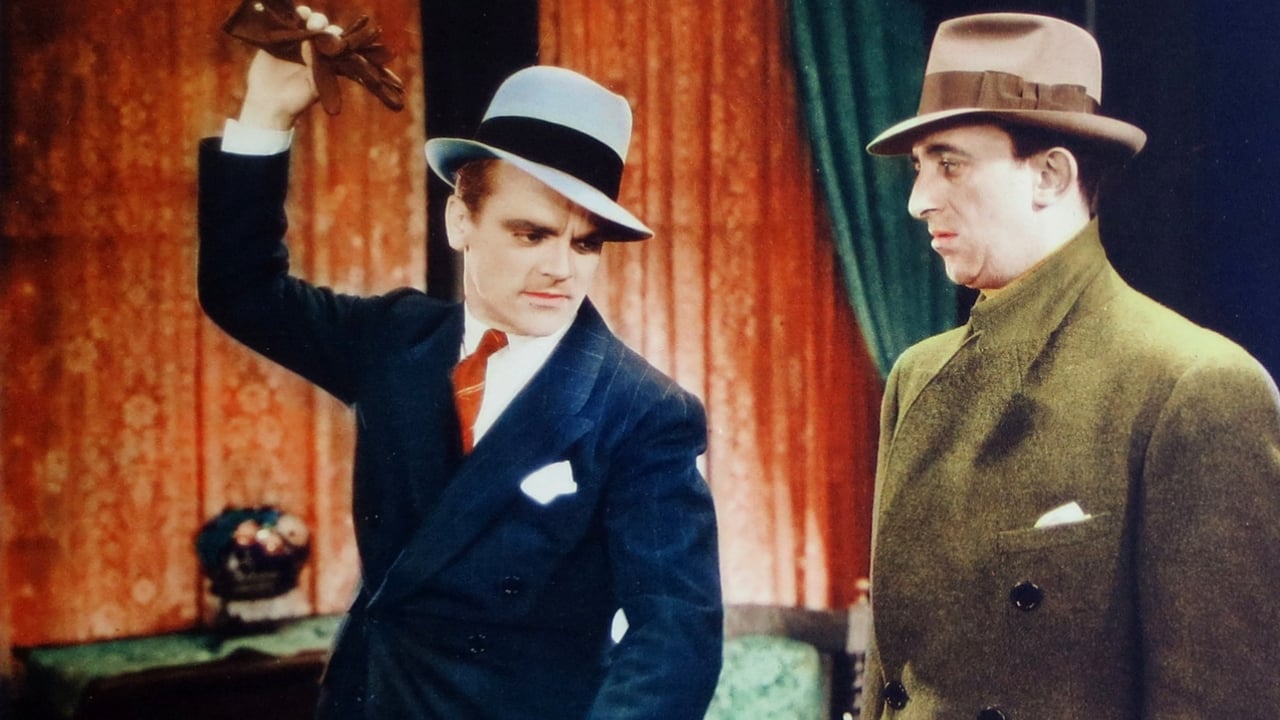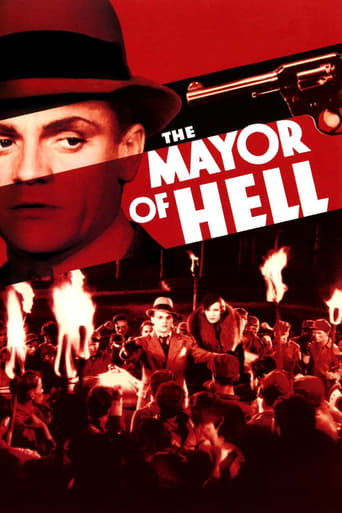

This is How Movies Should Be Made
... View MorePurely Joyful Movie!
... View MorePlot so thin, it passes unnoticed.
... View MoreAbsolutely Fantastic
... View MoreThis film worked for me where the estimable "Boys' Town" failed a few years back; true, it's a brisk-paced, openly manipulative crowd pleaser, but it's lively and gripping, with generous dollops of social comment, romantic comedy, melodrama, prison story, ensemble character work and even gangster action all thrown into the mix. Warner Brothers did have a social conscience, as Hollywood studios went (it didn't extend to their own employees, for example), but they certainly also knew how to play up the exploitation angle for entertainment. Perhaps the film's best moments are at its most cynical - Allen Jenkins shines as the lugubrious 'Uncle' Mike, the hard-bitten sidekick who has to put up with his boss's mercurial gyrations, and it's always entertaining to watch James Cagney go a little too far and get his face slapped by a dame who gives as good as she gets.The child actors are all very good, and nicely differentiated in the vast mix of boys, and there is attention to background detail throughout - not everything is spelt out explicitly in the dialogue, for all the film's efficient hustle. There is a bit of almost everything from heartbreak (the scene with the clinging mother in the courtroom is unexpectedly effective) to horror, with a healthy spice of humour on the side; the studio roster of character actors fills out the single-scene minor roles with talent, and all in all it's a fine film in ninety minutes.
... View MoreThis is a typically fast-moving entertaining movie of the early 1930s. When you have James Cagney in the lead, these "pre-Code" films are even better: just fun stuff to watch. Usually, when films are "dated," it's a negative but not so with films from 1930-1934. Yeah, with the slang and the attitudes, dress, hairstyles, etc., they are dated but that's a big part of the fun. These films have an edge to them that almost always are fun to view.They also have a corniness which is appealing and fascinating. You see people - like the juvenile delinquents pictured in this film and their goofy parents - that you just don't see in any period but this one (early '30s). Early on this movie, the kids go before the judge and you sit and just laugh at these crazy characters that appear in court on behalf of their kids, one after the other. Yes, we get the stereotypical emotional Italian father; the Jewish dad; the Anglo-Saxon mom and a few other moms who all, in dramatic form, plead theirs is "a good boy." Even though things are predictable in some cases, you don't mind because everyone in here is so much fun to watch.This also teaches you that kids were punks 75 years ago, too, stealing, robbing, mugging, lying - hey, that's the human condition. This movie debunks the theory that "people were nicer back in the old days." No, people have always been rotten or good. The degree was aided by their environment, parents, financial situation and other things. Here, we get a bunch of "Dead End" kids who wind up in Reform School.The ridiculous and stupidly-liberal storyline has kids acting immediately like angels once they run the show at the reform school; not punished in the slightest for causing a man to fall to his death and setting the institution on fire (the explanation: he was a meanie and deserved it. So much for real justice and reform.); and "Patsy" shooting a guy bit never having to even be questioned by police because he's the good guy! Notice the subtle anti-religious dig in which the only guy seen praying is the evil "warden." That's no coincidence, no accident. That sort of negative-association things has been going on ever since the Hays Code was canned in the late '60s and was seen, as you see hear, in the Pre-Code early '30s.Dudley Digges, by the way, is outstanding in his "bad guy" role of "Mr. Thomson." I especially his voice was very effective and could picture him playing one of those similarly-evil roles as an institution boss in a Charles Dickens film adaptation. Cagney played his normal role, the take-no-guff tough guy who gets the pretty girl, "Dorothy Griffith," played by Madge Blake. Frankie Darro also was effective as the leader of the boys, "Jimmy Smith." Just the looks on Darro's face alone made his character believable. Some thing he was the real star of the film, but I'll still go with Cagney. The rest of the reform school kids weren't too believable and they were really ethnic stereotypes, but they were all fun to watch.I thought the most interesting part of the film was the first 20 minutes when we saw how bad these kids were and witnessed the good and bad and stereotypical parents in the court after the kids were arrested. Those scenes are pure 1930s Dead End Kids stuff. They always showed the kids to be bad news at the beginning of the film, but by the time the story was over they all looked acting more like Wally and Beaver Cleaver - hardly rough "delinquents." It's very far-fetched but it works, entertainment-wise.Overall, a hokey but very entertaining movie, typical of Cagney films and those of the early '30s. Almost all of them rate at least eight stars for their entertainment value.
... View MoreJAMES CAGNEY gets top billing in THE MAYOR OF HELL but it's really little tough guy FRANKIE DARRO who has the central role of a boy from the slums who lands in a reform school run by a ruthless warden (DUDLEY DIGGES) interested only in punishing the boys while he cooks the books. Darro makes quite an impression with his hostile looks, locking glances with the warden at every turn with eyes blazing with hatred.It takes the entrance of Cagney to change things around, an ex- gangster who has been deputized to help run things at the reformatory and who sympathizes with the plights of the boys, especially Darro who reminds him of his own tough days as a street punk. JAMES CAGNEY puts all of his usual energy into the role of the do-gooder who changes things around, along with cooperative Nurse Griffith (MADGE EVANS), and is there when the going gets tough and things revert back to their nasty ways during his brief absence.The last half-hour of the film gets a little too melodramatic as the kids take matters into their own hands after the warden causes the death of one of their fellow inmates. There's a climactic scene where they put him on trial. When he escapes their clutches by jumping out a window, a chase follows and a barn is burned down forcing him to jump to his death. The plot contrivances that follow are hard to swallow, but for Jimmy and Madge Evans at least there's a happy ending.ALLEN JENKINS is a welcome presence for comic relief but the tone of the film borders on heavy prison melodrama almost all the way.DUDLEY DIGGES plays the unsympathetic role of the sadistic warden fairly well, but I still think of him as the befuddled detective who has a hard time pinning down RAFFLES (Ronald Colman) in that Scotland Yard yarn.For Cagney fans, this is a glimpse of him at his talented best in an early role. Archie Mayo directs the project in his brisk, no nonsense Warner style.
... View More"The Mayor Of Hell" has the feel of an early Dead End Kids film, but with a much harder edge and very few light spots, preceding the first appearance of the Dead Enders by four years. James Cagney has a full screen opening credit, even though technically, the 'mayor' of the movie's title is actually portrayed by Frankie Darro, one of several boys sent to reform school during the opening scenes. Darro's character is Jimmy Smith, a young tough who's befriended by 'Patsy' Gargan (Cagney), and is elected to the position when Gargan takes a chance at humanizing conditions at a state reformatory.Warner Brothers made a lot of these types of films, attempting to provide a conscience of sorts in an era that knew only too well about the effects of crime and poverty. This movie is quite gritty, with no apologies for ethnic stereotyping, as in the submissive posture of a black father in court or the way a Jewish kid gets to run a candy shop in the reform school. The rules at the reformatory are simple enough - work hard and keep your mouth shut; step out of line and you answer personally to Warden Thompson (Dudley Digges).Cagney's role in the story seems somewhat ambiguous, since even though he makes a serious effort to improve conditions inside the reformatory, on the outside he's still nominally in control of a criminal racket. The film's attempt to juggle this dichotomy falls short in my estimation, the finale attempts to wrap things up in a neat package as Gargan awaits the outcome of a near fatal shooting of one of his henchmen. Not exactly the kind of role modeling one would look for in a film like this.Warner Brothers would sanitize some of the elements of this story in a 1938 remake titled "Crime School", featuring Humphrey Bogart in the Cagney role, and Billy Halop in the Frankie Darro part. If you're partial to the Dead End Kids you'll probably like the latter film better, since it also offers familiar faces like Leo Gorcey, Huntz Hall, Bobby Jordan and Gabriel Dell. However the ending is somewhat muddied in that one too, with Bogart's warden character involved in a cover up of a prison breakout. Both films offer a romantic interest for the lead characters, in 'Mayor', Madge Evans is a reform minded nurse that falls for Cagney's character.Curiously, a lot of James Cagney's early films aren't commercially available, so you'll have to keep your eyes peeled for a screening on Turner Classics, or source the film from a private collector. Personally, I can't get enough of this kind of stuff, and find intriguing points of interest in the films of all genres from the Thirties and Forties.
... View More